-

Oct
27
New Swine Inspection System upheld in court
.png?sfvrsn=dc2b53d1_0)
The United States Department of Agriculture’s (USDA’s) New Swine Inspection System (NSIS) was recently upheld in court. NSIS allows for additional inspection duties to be done by the processing facility’s employees as well as allows for faster line processing speeds.
Read more
-

Oct
27
Protect Farmers from the SEC Act Introduced
.png?sfvrsn=52b53d1_0)
The Protect Farmers from the SEC Act was recently introduced by Congressman Frank Lucas (R-OK), along with 80 other members of Congress. The bill would prohibit the U.S. Securities and Exchange Commission (SEC) from requiring an issuer of securities to disclose greenhouse gas emissions from upstream and downstream activities in the issuer’s value chain arising from farms and ranches.
Read more
-

Oct
27
USDA to give over half billion in pandemic relief to food workers
.png?sfvrsn=2a2b53d1_0)
The United States Department of Agriculture (USDA) has announced fifteen organizations that have been selected to receive funding from the Farm and Farm Workers Relief Grant Program (FFWR). USDA has set aside over $670 million in grants for the program.
Read more
-

Oct
27
White House announces plan to support fair and competitive meat and poultry markets
.png?sfvrsn=4d2b53d1_0)
During a meeting of the White House Competition Council, President Joe Biden introduced new efforts by the United States Department of Agriculture (USDA) to support fair and competitive meat and poultry markets. The Proposed Rule on Inclusive Competition and Market Integrity and Agricultural Competition Challenge to the State Attorneys General are said to protect livestock producers.
Read more
-

Oct
27
Takeaways of the White House Conference on Hunger, Nutrition, and Health
.png?sfvrsn=6c2b53d1_0)
At the end of September, the Biden Administration held the White House Conference on Hunger, Nutrition, and Health. The event ties into one of the administration’s goals to end hunger in America by 2030 through proposed legislation, regulatory changes, and public-private partnerships.
Read more
-

Oct
20
Interpretive Summary: Biomarkers for monitoring the equine large intestinal inflammatory response to stress-induced dysbiosis and probiotic supplementation
.png?sfvrsn=250352d1_0)
Horses can suffer from intestinal barrier disruption leading to permeability associated with local inflammation, which can result in discomfort and even disease. Intestinal barrier disruption may be a consequence of microbiota disturbances in the large intestine.
Read more
-

Oct
20
Interpretive Summary: Cecal microbiota of feedlot cattle fed a four-species Bacillus supplement
.png?sfvrsn=b0352d1_0)
Microbes in the rumen break down fiber and complex nutrients into energy that cattle can absorb. Rumen microbes are becoming well studied, but the microbes of the hindgut—specifically of the cecum and large intestine—are less well-studied.
Read more
-

Oct
20
Interpretive Summary: Effect of microbial inoculation and storage length on the fermentation profile and nutritive value of high-moisture corn ensiled at 2 different dry matter concentrations
.png?sfvrsn=ee0352d1_0)
High-moisture corn (HMC) short-term fermentation is affected by dry matter (DM) concentration. Thus, producers try to influence HMC fermentation by using microbial inoculants and by harvesting HMC at different DM concentrations. This study aimed to evaluate the effects of different DM concentrations, heterofermentative microbial inoculants, and storage length on the fermentation and nutritive value of HMC.
Read more
-

Oct
20
Interpretive Summary: Calf rumen microbiome from birth to weaning and shared microbial properties to the maternal rumen microbiome
.png?sfvrsn=cf0352d1_0)
Developmental programming has highlighted important influences of maternal factors on offspring development. Recent research indicates a programming potential of the rumen microbiome and understanding this role as well as how inoculation occurs may allow beef producers to optimize management practices of gestating cows such that offspring performance is improved via the rumen microbiome.
Read more
-

Oct
20
Interpretive Summary: Influence of form of selenium supplementation and tall fescue endophyte toxicity on growth performance, serum parameters, and tissue masses of grazing beef steers
198f30897d8c62e581bfff00009094bd.png?sfvrsn=9b0352d1_0)
Beef cattle production in the southeastern United States is plagued by two common nutritional problems. Fescue toxicosis, caused by consumption of toxic ergot alkaloids in endophyte-infected tall fescue, is a major detriment to growth performance of grazing cattle and profitability for cow/calf and backgrounding cattle operations.
Read more
-

Oct
20
Interpretive Summary: Impact of digital dermatitis on locomotion and gait traits of beef cattle
.png?sfvrsn=b40352d1_0)
Digital dermatitis (DD) impacts cattle health, productivity, and welfare; and is an emerging challenge for the beef industry. The most obvious clinical sign associated with DD is lameness; however, not all cattle afflicted with DD will become lame.
Read more
-

Oct
20
Interpretive Summary: Transcriptomic and biochemical analyses revealed the improved growth, lipid metabolism, and flesh quality of grass carp (Ctenopharyngodon idellus) by dietary Eucommia ulmoides bark and leaf supplementation
.png?sfvrsn=550252d1_0)
As a traditional herb, Eucommia ulmoides (E. ulmoides) has been utilized in East Asia for at least 2 000 years. In recent years, E. ulmoides has been applied in the culture of fish for its functions of promoting growth, lipid metabolism, and flesh quality.
Read more
-

Oct
13
Interpretive Summary: Effects of including Sweet Bran or modified distillers grains in the diet of feedlot steers and sorting at terminal implant on growth performance, feeding behavior, and liver abscess occurrence
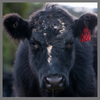
The objectives of this study were to 1) assess inclusion of Sweet Bran in diets of feedlot steers on performance and feeding behavior and 2) examine the effects of sorting animals at terminal implant on performance, feeding behavior, and liver abscess occurrence.
Read more
-

Oct
13
Interpretive Summary: Unraveling the pros and cons of various in vitro methodologies for ruminant nutrition: a review
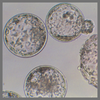
In vitro methodologies have been used in animal nutrition research for decades to decrease the use of animals and experimental time and cost. Due to its lower cost, in vitro methodologies are commonly used for preliminary testing, prior to large in vivo trials.
Read more
-

Oct
13
Interpretive Summary: Circadian clocks and their integration with metabolic and reproductive systems: our current understanding and its application to the management of dairy cows
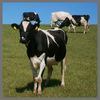
Here we review circadian clocks and their function in the regulation of metabolic and reproductive systems as well as the consequence of circadian disruption on mammary development and lactation with a particular focus on recent research findings from studies of dairy cows.
Read more
-

Oct
13
Interpretive Summary: Extending lactation length: consequences for cow, calf, and farmer
.png?sfvrsn=c80452d1_0)
Traditionally, a 1-yr calving interval is advised to dairy farmers to realize a yearly peak in milk yield. A 1-yr calving interval, however, implies a yearly event of drying-off, calving, and start of lactation, which are all associated with an increased risk for diseases and disorders.
Read more
-

Oct
13
Interpretive Summary: In utero hyperthermia in late gestation derails dairy calf early-life mammary development
.png?sfvrsn=910452d1_0)
Late-gestation in utero heat stress in dairy cattle negatively affects the mammary microstructure and milk yield at maturity, but investigation into early-life windows of mammary development is needed to fully characterize the lifelong consequences of intrauterine heat stress on the mammary gland (MG).
Read more
-

Oct
13
Infographic: Feature Collection – Biology of Lactation
.png?sfvrsn=790b52d1_0)
This month’s feature collection showcases three Board Invited Reviews exploring the biology of lactation from three different perspectives. These include the impact of circadian rhythms on production efficiency, the impact of early heat stress on future cow performance, and a holistic look at how extending lactation length impacts the dairy cow’s whole production cycle and management.
Read more
-

Oct
06
Interpretive Summary: Effects of diet on feed intake, weight change, and gas emissions in beef cows
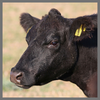
The beef cow utilizes about 74% of total feed energy required to produce beef. Therefore, a more thorough understanding of feed intake, weight gain, and feed efficiency traits in the beef cow is fundamental to reducing cost and improving the environmental footprint of beef production.
Read more
-

Oct
06
Interpretive Summary: Effect of supplemental methionine on health and performance of receiving beef heifers
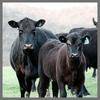
Methionine supplementation can improve immune function in transition dairy cattle. Our objective was to determine if supplemental methionine could improve health and performance of newly received growing cattle.
Read more
 OctNew Swine Inspection System upheld in court
OctNew Swine Inspection System upheld in court.png?sfvrsn=dc2b53d1_0) The United States Department of Agriculture’s (USDA’s) New Swine Inspection System (NSIS) was recently upheld in court. NSIS allows for additional inspection duties to be done by the processing facility’s employees as well as allows for faster line processing speeds.
The United States Department of Agriculture’s (USDA’s) New Swine Inspection System (NSIS) was recently upheld in court. NSIS allows for additional inspection duties to be done by the processing facility’s employees as well as allows for faster line processing speeds. OctProtect Farmers from the SEC Act Introduced
OctProtect Farmers from the SEC Act Introduced.png?sfvrsn=52b53d1_0) The Protect Farmers from the SEC Act was recently introduced by Congressman Frank Lucas (R-OK), along with 80 other members of Congress. The bill would prohibit the U.S. Securities and Exchange Commission (SEC) from requiring an issuer of securities to disclose greenhouse gas emissions from upstream and downstream activities in the issuer’s value chain arising from farms and ranches.
The Protect Farmers from the SEC Act was recently introduced by Congressman Frank Lucas (R-OK), along with 80 other members of Congress. The bill would prohibit the U.S. Securities and Exchange Commission (SEC) from requiring an issuer of securities to disclose greenhouse gas emissions from upstream and downstream activities in the issuer’s value chain arising from farms and ranches. OctUSDA to give over half billion in pandemic relief to food workers
OctUSDA to give over half billion in pandemic relief to food workers.png?sfvrsn=2a2b53d1_0) The United States Department of Agriculture (USDA) has announced fifteen organizations that have been selected to receive funding from the Farm and Farm Workers Relief Grant Program (FFWR). USDA has set aside over $670 million in grants for the program.
The United States Department of Agriculture (USDA) has announced fifteen organizations that have been selected to receive funding from the Farm and Farm Workers Relief Grant Program (FFWR). USDA has set aside over $670 million in grants for the program. OctWhite House announces plan to support fair and competitive meat and poultry markets
OctWhite House announces plan to support fair and competitive meat and poultry markets.png?sfvrsn=4d2b53d1_0) During a meeting of the White House Competition Council, President Joe Biden introduced new efforts by the United States Department of Agriculture (USDA) to support fair and competitive meat and poultry markets. The Proposed Rule on Inclusive Competition and Market Integrity and Agricultural Competition Challenge to the State Attorneys General are said to protect livestock producers.
During a meeting of the White House Competition Council, President Joe Biden introduced new efforts by the United States Department of Agriculture (USDA) to support fair and competitive meat and poultry markets. The Proposed Rule on Inclusive Competition and Market Integrity and Agricultural Competition Challenge to the State Attorneys General are said to protect livestock producers. OctTakeaways of the White House Conference on Hunger, Nutrition, and Health
OctTakeaways of the White House Conference on Hunger, Nutrition, and Health.png?sfvrsn=6c2b53d1_0) At the end of September, the Biden Administration held the White House Conference on Hunger, Nutrition, and Health. The event ties into one of the administration’s goals to end hunger in America by 2030 through proposed legislation, regulatory changes, and public-private partnerships.
At the end of September, the Biden Administration held the White House Conference on Hunger, Nutrition, and Health. The event ties into one of the administration’s goals to end hunger in America by 2030 through proposed legislation, regulatory changes, and public-private partnerships. OctInterpretive Summary: Biomarkers for monitoring the equine large intestinal inflammatory response to stress-induced dysbiosis and probiotic supplementation
OctInterpretive Summary: Biomarkers for monitoring the equine large intestinal inflammatory response to stress-induced dysbiosis and probiotic supplementation.png?sfvrsn=250352d1_0) Horses can suffer from intestinal barrier disruption leading to permeability associated with local inflammation, which can result in discomfort and even disease. Intestinal barrier disruption may be a consequence of microbiota disturbances in the large intestine.
Horses can suffer from intestinal barrier disruption leading to permeability associated with local inflammation, which can result in discomfort and even disease. Intestinal barrier disruption may be a consequence of microbiota disturbances in the large intestine. OctInterpretive Summary: Cecal microbiota of feedlot cattle fed a four-species Bacillus supplement
OctInterpretive Summary: Cecal microbiota of feedlot cattle fed a four-species Bacillus supplement.png?sfvrsn=b0352d1_0) Microbes in the rumen break down fiber and complex nutrients into energy that cattle can absorb. Rumen microbes are becoming well studied, but the microbes of the hindgut—specifically of the cecum and large intestine—are less well-studied.
Microbes in the rumen break down fiber and complex nutrients into energy that cattle can absorb. Rumen microbes are becoming well studied, but the microbes of the hindgut—specifically of the cecum and large intestine—are less well-studied. OctInterpretive Summary: Effect of microbial inoculation and storage length on the fermentation profile and nutritive value of high-moisture corn ensiled at 2 different dry matter concentrations
OctInterpretive Summary: Effect of microbial inoculation and storage length on the fermentation profile and nutritive value of high-moisture corn ensiled at 2 different dry matter concentrations.png?sfvrsn=ee0352d1_0) High-moisture corn (HMC) short-term fermentation is affected by dry matter (DM) concentration. Thus, producers try to influence HMC fermentation by using microbial inoculants and by harvesting HMC at different DM concentrations. This study aimed to evaluate the effects of different DM concentrations, heterofermentative microbial inoculants, and storage length on the fermentation and nutritive value of HMC.
High-moisture corn (HMC) short-term fermentation is affected by dry matter (DM) concentration. Thus, producers try to influence HMC fermentation by using microbial inoculants and by harvesting HMC at different DM concentrations. This study aimed to evaluate the effects of different DM concentrations, heterofermentative microbial inoculants, and storage length on the fermentation and nutritive value of HMC. OctInterpretive Summary: Calf rumen microbiome from birth to weaning and shared microbial properties to the maternal rumen microbiome
OctInterpretive Summary: Calf rumen microbiome from birth to weaning and shared microbial properties to the maternal rumen microbiome.png?sfvrsn=cf0352d1_0) Developmental programming has highlighted important influences of maternal factors on offspring development. Recent research indicates a programming potential of the rumen microbiome and understanding this role as well as how inoculation occurs may allow beef producers to optimize management practices of gestating cows such that offspring performance is improved via the rumen microbiome.
Developmental programming has highlighted important influences of maternal factors on offspring development. Recent research indicates a programming potential of the rumen microbiome and understanding this role as well as how inoculation occurs may allow beef producers to optimize management practices of gestating cows such that offspring performance is improved via the rumen microbiome. OctInterpretive Summary: Influence of form of selenium supplementation and tall fescue endophyte toxicity on growth performance, serum parameters, and tissue masses of grazing beef steers
OctInterpretive Summary: Influence of form of selenium supplementation and tall fescue endophyte toxicity on growth performance, serum parameters, and tissue masses of grazing beef steers198f30897d8c62e581bfff00009094bd.png?sfvrsn=9b0352d1_0) Beef cattle production in the southeastern United States is plagued by two common nutritional problems. Fescue toxicosis, caused by consumption of toxic ergot alkaloids in endophyte-infected tall fescue, is a major detriment to growth performance of grazing cattle and profitability for cow/calf and backgrounding cattle operations.
Beef cattle production in the southeastern United States is plagued by two common nutritional problems. Fescue toxicosis, caused by consumption of toxic ergot alkaloids in endophyte-infected tall fescue, is a major detriment to growth performance of grazing cattle and profitability for cow/calf and backgrounding cattle operations. OctInterpretive Summary: Impact of digital dermatitis on locomotion and gait traits of beef cattle
OctInterpretive Summary: Impact of digital dermatitis on locomotion and gait traits of beef cattle.png?sfvrsn=b40352d1_0) Digital dermatitis (DD) impacts cattle health, productivity, and welfare; and is an emerging challenge for the beef industry. The most obvious clinical sign associated with DD is lameness; however, not all cattle afflicted with DD will become lame.
Digital dermatitis (DD) impacts cattle health, productivity, and welfare; and is an emerging challenge for the beef industry. The most obvious clinical sign associated with DD is lameness; however, not all cattle afflicted with DD will become lame. OctInterpretive Summary: Transcriptomic and biochemical analyses revealed the improved growth, lipid metabolism, and flesh quality of grass carp (Ctenopharyngodon idellus) by dietary Eucommia ulmoides bark and leaf supplementation
OctInterpretive Summary: Transcriptomic and biochemical analyses revealed the improved growth, lipid metabolism, and flesh quality of grass carp (Ctenopharyngodon idellus) by dietary Eucommia ulmoides bark and leaf supplementation.png?sfvrsn=550252d1_0) As a traditional herb, Eucommia ulmoides (E. ulmoides) has been utilized in East Asia for at least 2 000 years. In recent years, E. ulmoides has been applied in the culture of fish for its functions of promoting growth, lipid metabolism, and flesh quality.
As a traditional herb, Eucommia ulmoides (E. ulmoides) has been utilized in East Asia for at least 2 000 years. In recent years, E. ulmoides has been applied in the culture of fish for its functions of promoting growth, lipid metabolism, and flesh quality. OctInterpretive Summary: Effects of including Sweet Bran or modified distillers grains in the diet of feedlot steers and sorting at terminal implant on growth performance, feeding behavior, and liver abscess occurrence
OctInterpretive Summary: Effects of including Sweet Bran or modified distillers grains in the diet of feedlot steers and sorting at terminal implant on growth performance, feeding behavior, and liver abscess occurrence The objectives of this study were to 1) assess inclusion of Sweet Bran in diets of feedlot steers on performance and feeding behavior and 2) examine the effects of sorting animals at terminal implant on performance, feeding behavior, and liver abscess occurrence.
The objectives of this study were to 1) assess inclusion of Sweet Bran in diets of feedlot steers on performance and feeding behavior and 2) examine the effects of sorting animals at terminal implant on performance, feeding behavior, and liver abscess occurrence. OctInterpretive Summary: Unraveling the pros and cons of various in vitro methodologies for ruminant nutrition: a review
OctInterpretive Summary: Unraveling the pros and cons of various in vitro methodologies for ruminant nutrition: a review In vitro methodologies have been used in animal nutrition research for decades to decrease the use of animals and experimental time and cost. Due to its lower cost, in vitro methodologies are commonly used for preliminary testing, prior to large in vivo trials.
In vitro methodologies have been used in animal nutrition research for decades to decrease the use of animals and experimental time and cost. Due to its lower cost, in vitro methodologies are commonly used for preliminary testing, prior to large in vivo trials. OctInterpretive Summary: Circadian clocks and their integration with metabolic and reproductive systems: our current understanding and its application to the management of dairy cows
OctInterpretive Summary: Circadian clocks and their integration with metabolic and reproductive systems: our current understanding and its application to the management of dairy cows Here we review circadian clocks and their function in the regulation of metabolic and reproductive systems as well as the consequence of circadian disruption on mammary development and lactation with a particular focus on recent research findings from studies of dairy cows.
Here we review circadian clocks and their function in the regulation of metabolic and reproductive systems as well as the consequence of circadian disruption on mammary development and lactation with a particular focus on recent research findings from studies of dairy cows. OctInterpretive Summary: Extending lactation length: consequences for cow, calf, and farmer
OctInterpretive Summary: Extending lactation length: consequences for cow, calf, and farmer.png?sfvrsn=c80452d1_0) Traditionally, a 1-yr calving interval is advised to dairy farmers to realize a yearly peak in milk yield. A 1-yr calving interval, however, implies a yearly event of drying-off, calving, and start of lactation, which are all associated with an increased risk for diseases and disorders.
Traditionally, a 1-yr calving interval is advised to dairy farmers to realize a yearly peak in milk yield. A 1-yr calving interval, however, implies a yearly event of drying-off, calving, and start of lactation, which are all associated with an increased risk for diseases and disorders. OctInterpretive Summary: In utero hyperthermia in late gestation derails dairy calf early-life mammary development
OctInterpretive Summary: In utero hyperthermia in late gestation derails dairy calf early-life mammary development.png?sfvrsn=910452d1_0) Late-gestation in utero heat stress in dairy cattle negatively affects the mammary microstructure and milk yield at maturity, but investigation into early-life windows of mammary development is needed to fully characterize the lifelong consequences of intrauterine heat stress on the mammary gland (MG).
Late-gestation in utero heat stress in dairy cattle negatively affects the mammary microstructure and milk yield at maturity, but investigation into early-life windows of mammary development is needed to fully characterize the lifelong consequences of intrauterine heat stress on the mammary gland (MG). OctInfographic: Feature Collection – Biology of Lactation
OctInfographic: Feature Collection – Biology of Lactation.png?sfvrsn=790b52d1_0) This month’s feature collection showcases three Board Invited Reviews exploring the biology of lactation from three different perspectives. These include the impact of circadian rhythms on production efficiency, the impact of early heat stress on future cow performance, and a holistic look at how extending lactation length impacts the dairy cow’s whole production cycle and management.
This month’s feature collection showcases three Board Invited Reviews exploring the biology of lactation from three different perspectives. These include the impact of circadian rhythms on production efficiency, the impact of early heat stress on future cow performance, and a holistic look at how extending lactation length impacts the dairy cow’s whole production cycle and management. OctInterpretive Summary: Effects of diet on feed intake, weight change, and gas emissions in beef cows
OctInterpretive Summary: Effects of diet on feed intake, weight change, and gas emissions in beef cows The beef cow utilizes about 74% of total feed energy required to produce beef. Therefore, a more thorough understanding of feed intake, weight gain, and feed efficiency traits in the beef cow is fundamental to reducing cost and improving the environmental footprint of beef production.
The beef cow utilizes about 74% of total feed energy required to produce beef. Therefore, a more thorough understanding of feed intake, weight gain, and feed efficiency traits in the beef cow is fundamental to reducing cost and improving the environmental footprint of beef production. OctInterpretive Summary: Effect of supplemental methionine on health and performance of receiving beef heifers
OctInterpretive Summary: Effect of supplemental methionine on health and performance of receiving beef heifers Methionine supplementation can improve immune function in transition dairy cattle. Our objective was to determine if supplemental methionine could improve health and performance of newly received growing cattle.
Methionine supplementation can improve immune function in transition dairy cattle. Our objective was to determine if supplemental methionine could improve health and performance of newly received growing cattle.



